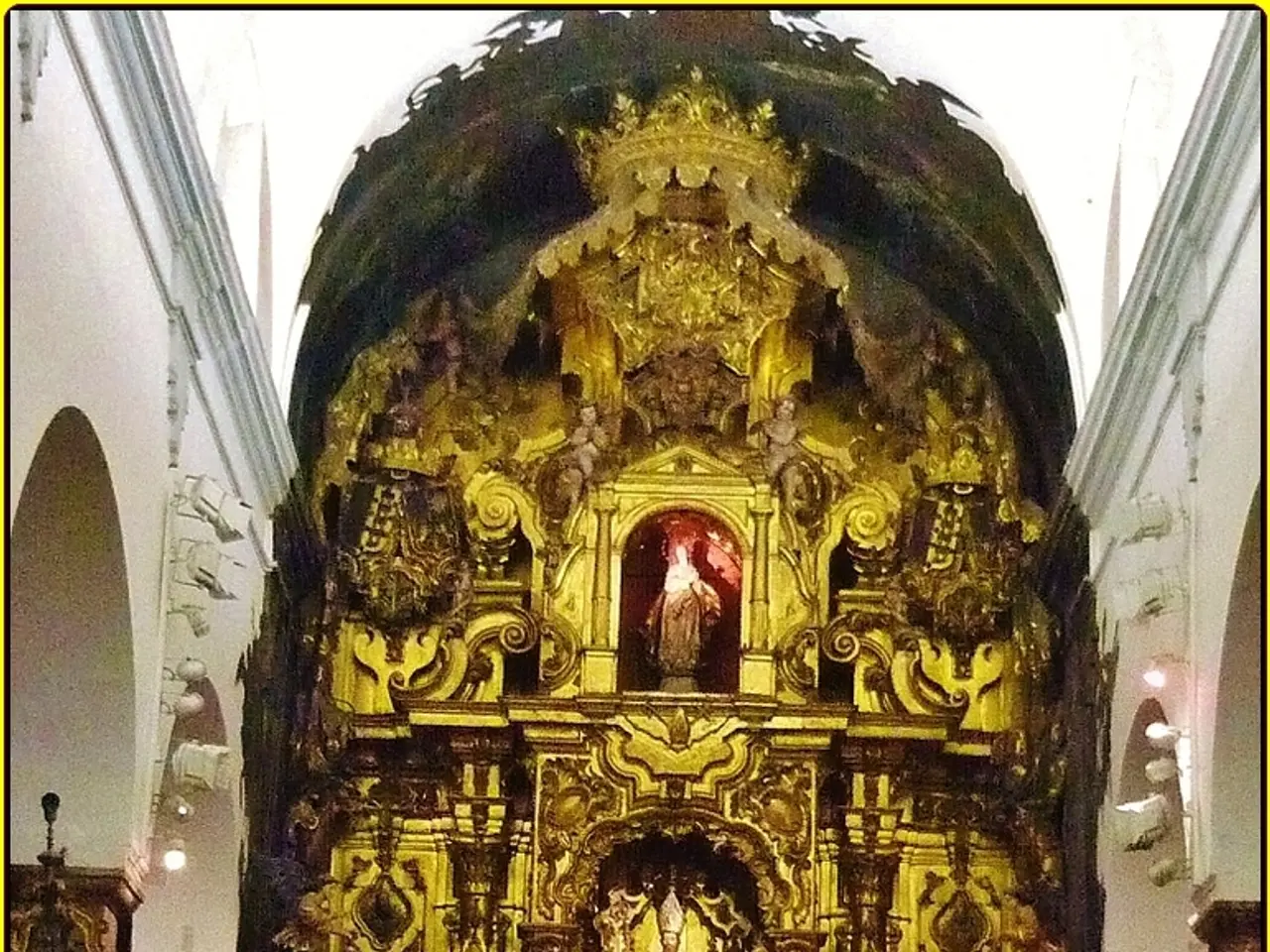Unraveling the Rich Past of Vintage Turquoise Jewelry
In the vibrant world of gemstones, few have captured the hearts and minds of jewellery enthusiasts quite like turquoise. This enchanting gemstone, with its distinctive blue-green hue, has rarely, if ever, diminished in popularity, and it looks set to remain in demand well into the 21st century and beyond.
In Persia, turquoise holds a special significance, known as 'firunza', meaning victory. This association is deeply rooted in Persian culture, where turquoise was not just a beautiful gemstone but also a symbol of triumph, protection, and spiritual purity.
Persian artisans skilfully incorporated turquoise into their jewellery, creating intricate pieces that combined the gemstone with precious stones like diamonds, rubies, and emeralds, set in gold. These creations symbolised wealth and royal status, often adorning crowns, thrones, and garments of the Shahs of Persia, signifying their power and divine favour.
Turquoise was also used in decorative objects and architectural elements, reflecting its cultural importance as a powerful emblem of status and protection in ancient Persian civilization. The finest turquoise was mined in the Nishapur district of Iran, contributing to its central role in Persian artistry and symbolism.
Historically, Persian turquoise was highly prized and extremely valuable. The Shahs of Persia maintained the rights to the turquoise mines at Kishapur, and the finest specimens were presented to the Shah for his personal inspection.
Gemmologists know that the porous nature of turquoise increases its tendency of turning an ugly and undesirable dirty green color, which degrades its appearance and value. However, this did not deter the Persians, who believed that turquoise possessed protective and healing qualities. It was customary to hang a turquoise pendant around a baby's neck to ward off ill-health and disease.
In the Victorian age, turquoise became fashionable when mounted in high carat bright yellow gold, often in clusters of small, round cabochons reminiscent of Liquorice Allsorts. Jewellery from this era was often of naturalistic or organic design, and the turquoise itself often contained elements of native limonite known as turquoise matrix.
In the Post War era, turquoise was mounted in asymmetrical, three-dimensional gold frames alongside other primary-colored gems such as ruby, sapphire, amethyst, and emerald. This period saw a shift in design, with turquoise being used in bold and distinctive Art Deco brooches or in contrasting and colourful marquetry patterns with onyx, coral, and ivory in accessories such as cigarette cases and powder compacts.
The popularity of turquoise continued throughout the 20th century, whether as an accompaniment to diamonds in bold and distinctive Art Deco brooches or in contrasting and colourful marquetry patterns with onyx, coral, and ivory in accessories.
Old jewellery books are a valuable resource for jewellery historians, providing insights into the past and often containing historical facts and charming inaccuracies. For instance, Chapter VIII of Jewels of Romance and Renown contains interesting and little-known facts about turquoise. This book, published in 1933, provides information about rubies, sapphires, opals, and jade, as well as turquoise.
Turquoise is closely associated with Arts and Crafts jewellery and was liberally used by designer craftsmen like Archibald Knox for Liberty & Co and Murrle Bennett & Co. Today, the work of independent valuer, jewellery historian, and author John C Benjamin FGA DGA FIRV, who has written a column about the history of turquoise in jewellery design for Gems&Jewellery, continues to shed light on the fascinating history of this captivating gemstone.
In Persia, turquoise was regarded as "the most powerful of all amulets against the influence of the Evil Eye". This belief underscores the enduring allure of turquoise, a gemstone steeped in history, culture, and spiritual significance.
- Courses in gemmology often delve into the history and significance of turquoise, shedding light on its cultural importance.
- The value of a turquoise diploma from a reputable institution signifies advanced knowledge and skills in the field of gemstones.
- Foundation programs in gemmology offer a comprehensive introduction to the world of gemstones, including turquoise.
- Publications on gemstones frequently feature turquoise, showcasing its various aspects and applications.
- Fashion-and-beauty magazines sometimes feature turquoise jewelry, highlighting its role in contemporary lifestyle.
- Food-and-drink pairings often include recommendations for foods that complement the taste of turquoise jewelry.
- Home-and-garden ideas can incorporate turquoise accents to create a unique and vibrant atmosphere.
- Travel guides sometimes suggest visiting turquoise mines as a unique tourist attraction.
- Cars with luxurious interiors might feature turquoise accents to signify their high-end status.
- Books on education-and-self-development may include sections about the personal growth opportunities in studying gemstones such as turquoise.
- Social-media influencers often showcase turquoise jewelry in their lifestyle posts, adding a touch of glamour to their images.
- Career-development courses sometimes focus on the potential opportunities in the gemstone industry, including the demand for turquoise.
- Entertainment news sometimes covers celebrities wearing turquoise jewelry on the red carpet, adding to its pop-culture appeal.
- Sci-fi-and-fantasy novels might feature turquoise as a essential component in magical artifacts or potions.
- Sports enthusiasts might engage in sports-betting platforms offering odds on various sports events, including horse-racing, golf, and basketball.
- Personal-growth workshops often emphasize the importance of learning new skills, such as identifying and appreciating turquoise gems.
- Lifestyle blogs often provide tips for wearing turquoise jewelry and coordinating it with various fashion choices.
- Fashion influencers might create a tutorial on how to style a turquoise outfit for a specific occasion, such as a palace gala or a day at the racetrack.
- Sports analysts may discuss the role of turquoise in athletes' superstitions or their choice of accessories.
- Weather forecasts might mention the impact of weather conditions on turquoise mines, affecting the supply of the gemstone.
- Tennis matches might feature players wearing turquoise jewelry or apparel, reflecting their personal style and preferences.
- Sports-betting platforms might offer odds on upcoming turquoise gem auctions or the discovery of significant turquoise deposits.
- Basketball players might choose to wear turquoise shoes or wristbands during games, as a mark of their individual style or cultural heritage.




